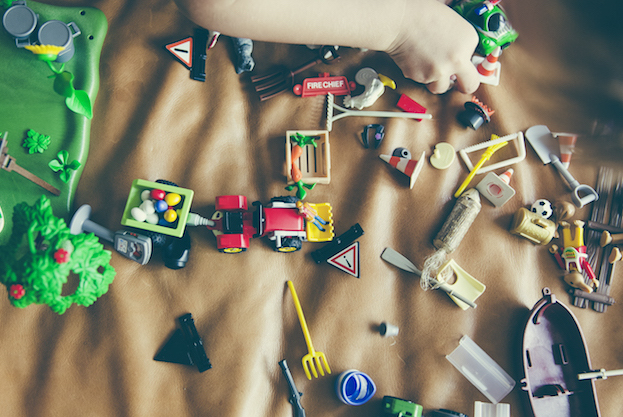Teach Your Children Well

Before baby number one is even crawling, parents soon realize they have many new titles, including chief protector, head cook, maid, and teacher. It’s this last one that often proves to be the most rewarding, as teaching our children is the one-of-a-kind task that always brings happiness and joy to our lives. Child-rearing experts say that teaching our children is a 24/7 job and that we are always showing our offspring what to think, how to feel and what to do…and the little ones are always observing the way we live. Let’s take a look at a time-proven method of teaching our children well: the Head, Heart and Hands Method.
When we engage the head, we’re building our kids’ cognitive awareness and mental processes. When we touch the heart, we’re teaching them to explore their feelings and their emotive processes. The hands come into play with just that – playing – by way of the kids learning new skills.
Two of the greatest character-building lessons that we strive to learn in life are those of gratitude and generosity. Being truly grateful for what we have and demonstrating heartfelt generosity to others is how we show ourselves, and the world, our values. It’s never too early to teach our children these lessons, and one of the best ways to teach and simultaneously develop these qualities in ourselves, and our children, is through donating.
Here’s how: Parents know one of the largest stockpiles of stuff that is no longer needed is piled high in the kids’ rooms. Sure, as parents it is very challenging to let go of toys, books, baby and children’s clothes, and furniture, because these aren’t just things, they are memories! Yet we stockpile these memories until we literally run out of room for the next phases in our children’s lives.
By facing this challenge of letting go of the physical things you no longer need, you teach your child the joy that comes from sharing with others.
Teaching the kiddos what to donate builds decision-making skills, which is the “head” part of the Head, Heart and Hands Method, and can begin at almost any age. Why we donate (the emotional, or “heart”) and how to donate (the “hands”) is determined by their ages. Very young children will see donating as a fun game they play with Mom and Dad, as they have not yet learned to grow attached to things.
Developmentally, the older the child is, the more attached to physical things they become — which may make donating their toys more of a challenge, but it’s one that’s well worth taking on. We have all witnessed children struggling to share with other children – “mine! Mine! MINE!”. Making donating a regular family activity is one of the best ways to teach your children to share and to develop gratitude and generosity as character traits.
Here are some more great ideas on how to teach lifelong lessons of gratitude for times past and create a heart full of generosity for times to come:
- Have family chats about the value and joy that comes with feeling grateful and being generous with others. Just use those parental instincts of yours to teach your kids what gratitude and generosity actually are. Read age-appropriate books with them about giving. Tell them about your own experiences in life, and ask grandparents or other family members to share what they believe. Give your children the knowledge they will need to value gratitude and generosity, and in turn they will learn to share freely and from their heart.
- Go on a household treasure hunt with them, seeking out examples for them to assess – “is mommy’s old necklace a treasure or should we donate it?” Provide opportunities to feel grateful for their family and to feel good when sharing, and don’t forget to show your heart! They need to see you glowing with a sense of pride and happiness as you let go of something that would be better off with someone else.
- Bring your children into all aspects of your donating efforts. By encouraging them to physically place their items into your donation boxes and bags, you’ll be teaching them how to make good decisions about what to keep and what to share. Have them help you schedule your donation pickup, and then have them help you mark the calendar!
- Make “donation day” a fun day when you schedule your donation pickup using Pickup Please! If you’re using boxes instead of bags, encourage your kids to decorate your boxes. They can even write “For the VVA” on them so it’s clear to our drivers what items to take. Then have them help you place the items outside for pickup. Finally, a reward could be in order: special yummy treats, a trip to the park, or play date with friends are awesome ways to help reinforce the good feelings and allows children to feel rewarded for their generosity.
America’s Best Donation Pickup Program


